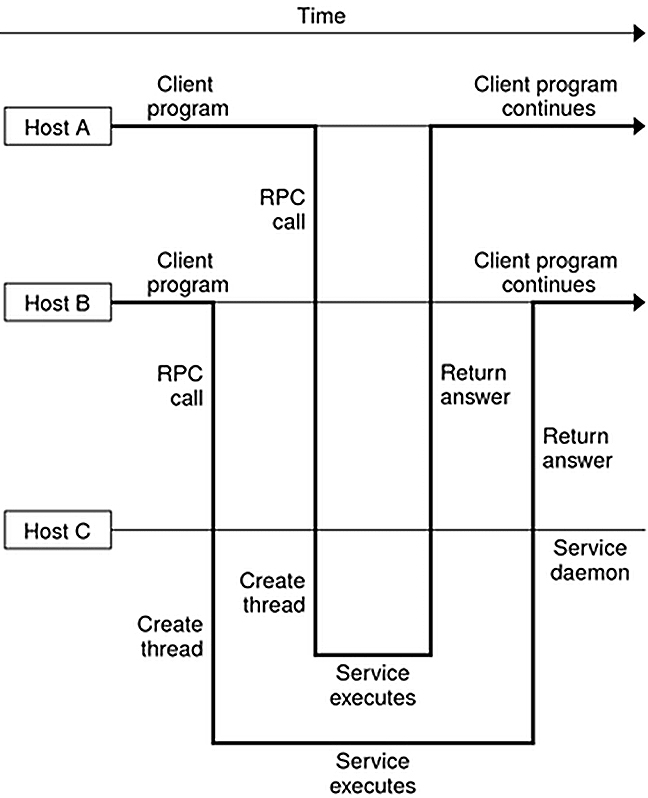MT Server Overview
Legacy Solaris RPC servers are single threaded. That is, they process client requests sequentially, as the requests come in. For example, say two requests come in, and the first takes 30 seconds to process, and the second takes only 1 second to process. The client that made the second request still has to wait for the first request to complete before it receives a response. This result is not desirable, especially in a multiprocessor server environment, where each CPU could be processing a different request simultaneously.Also, while one request is waiting for I/O to complete, sometimes other requests could be processed by the server.
Facilities in the RPC library for service developers can create multithreaded servers that deliver better performance to end users. Two modes of server multithreading are supported in TI-RPC: the Auto MT mode and the User MT mode.
In Auto mode, the server automatically creates a new thread for every incoming client request. This thread processes the request, sends a response, and exits. In the User mode, the service developer decides how to create and manage threads for concurrently processing the incoming client requests. Auto mode is much easier to use than the User mode, but the User mode offers more flexibility for service developers with special requirements.
Note - You must link in the thread library when writing RPC multithreaded-safe applications. The thread library must be the last named library on the link line. To link this properly, specify the –lthread option in the compile command.
The two calls that support server multithreading are rpc_control() and svc_done(). The rpc_control() call is used to set the MT mode, either Auto or User mode. If the server uses Auto mode, it does not need to invoke svc_done() at all. In User mode, svc_done() must be invoked after each client request is processed so that the server can reclaim the resources from processing the request. In addition, multithreaded RPC servers must call on svc_run(). Note that svc_getreqpoll() and svc_getreqset() are unsafe in MT applications.
If the server program does not invoke any of the MT interface calls, it remains in single-threaded mode, which is the default mode.
You are required to make RPC server procedures multithreaded safe regardless of which mode the server is using. Usually, this means that all static and global variables need to be protected with mutex locks. Mutual exclusion and other synchronization APIs are defined in /usr/include/synch.h and /usr/include/pthread.h.
The following figure illustrates a possible timing of a server implemented in one of the MT modes of operation.
Figure 5 MT RPC Server Timing Diagram

Sharing the Service Transport Handle
The service transport handle, SVCXPRT, contains a single data area for decoding arguments and encoding results. Therefore, in the default, single-threaded mode, this structure cannot be freely shared between threads that call functions that perform these operations. However, when a server is operating in the MT Auto or User modes, a copy of this structure is passed to the service dispatch procedure in order to enable concurrent request processing. Under these circumstances, some routines that would otherwise be unsafe become safe. Unless otherwise noted, the server interfaces are generally MT safe. See the rpc_svc_calls(3C) man page for more details on safety for server-side interfaces.